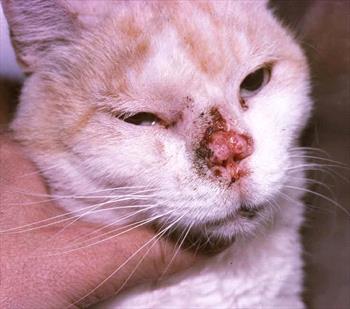neoplasia in cats bladder
To date information on prognosis and treatments for cats with bladder cancer transitional cell carcinoma. Surgical resection by partial segmental resection is the treatment of.

Transitional Cell Carcinoma Lap Of Love
The diagnosis of a urinary bladder neoplasm is generally delayed because of a lack of overt clinical signs or a partial response to empirical treatment.

. Cats with bladder cancer may strain to defecate as well. Transitional cell carcinoma is the common cancer of the bladder or urethra in dogs and cats accounting for 5075 of all bladder tumors. Another name for this disease is urinary bladder cancer.
Transitional Cell Carcinoma of the Renal Bladder and Urethra in Cats Transitional cell carcinoma TCC is a malignant aggressive and metastasizing spreading cancer arising from the transitional epithelium the highly stretchable lining of the urinary tract system of the kidney ureters the tubes that carry fluid from the kidneys to the bladder urinary bladder. Other urinary bladder tumors include SCC ADC rhabdomyosarcoma FSA CSA leiomyosarcoma HSA chemodectoma and benign tumors such as leiomyoma and fibroma. Urinary bladder tumors are rare in cats but of the possible cancers transitional cell carcinoma is the most commonly diagnosed.
Neoplasia and the kidneys Renal lymphoma is the most common renal tumor in cats and often presents with sudden onset of poor kidney function including acute kidney injury 2. 1 2 Transitional cell carcinoma TCC is the most prevalent lower urinary tract cancer in dogs and considerable information regarding TCC is available for dogs including. Epithelial tumors in particular TCC are the most common tumors of the urinary bladder and account for up to 92 of feline bladder tumors.
The urinary bladder is the most common site of urinary tract neoplasia in dogs and the second most common site of urinary tract neoplasia in cats after renal lymphoma. This is a malignant cancer usually arising from the inside surface of the urinary bladder or urethra and less commonly from the muscular wall of the urinary tract. Even though your cat may be urinating more often he may be passing very little urine each time due to possible blockage of the urinary tract by a bladder tumor.
Lower urinary tract neoplasia in companion animals is a debilitating and often life-threatening disease. The most common lower urinary tract tumor in dogs and cats is transitional cell. In dogs the most common type of urinary tract tumors are bladder tumors and of these the most common is transitional cell carcinoma TCC.
They are more likely to be malignant than benign. The usual treatment for primary ureteral neoplasia is nephrectomy and ureterectomy. Feline leukemia virus associated lymphoma seems to be declining but possibly 14 to 50 of cats affected by lymphosarcoma are FeLV positive 3.
JAVMA 210 1 46-50 PubMed. A variety of blood tests can help detect and diagnose. Transitional Cell Carcinoma.
The low incidence in cats may be due to a difference in tryptophan metabolism that results in low urinary concentrations of carcinogenic tryptophan metabolites. Urinary tract tumors can occur anywhere along the urinary system from the kidneys to the urethra. Neoplasms of the ureters bladder and urethra are uncommon in dogs and rare in cats.
Among the 77 cats that died or were euthanized 56 727 deaths were attributed to progressive urinary tract neoplasia with 54 of 56 964 being euthanized and 2 of 56 3. Rhabdomyosarcoma of the Urinary Bladder in Cats. Lower urinary tract neoplasia in companion animals is a debilitating and often life-threatening disease.
JSAP 40 5 222-223 PubMed. Patnaik A K Schwarz P D Greene R W 1986 A histopathological study of 20 urinary bladder neoplasms in the cat. The urinary bladder is the most common site of urinary tract neoplasia in dogs and the second most common site of urinary tract neoplasia in cats after renal lymphoma.
Considered part of the pelvic region of your cats body the urinary bladder is responsible for holding onto urine. A case of feline rectal prolapse which appeared to be secondary to transitional cell carcinoma of the urinary bladder is described. Symptoms of feline bladder cancer include bloody urine straining to urinate and increased frequency of urination.
Neoplasms of the canine and feline urinary bladder are diagnostic and therapeutic challenges to the veterinary clinician. The cat was reported to be incontinent and treatment was declined by the owners. Müllerian ducts begin as two ducts in the female embryo developing into the.
Tumors of the bladder urethra and prostate often occur independently although extension of these tumors into adjacent regions of the lower urinary tract is documented frequently. In contrast to TCC in dogs the incidence of TCC in cats is low. TCC is the second most common site of urinary tract neoplasia in cats after renal lymphoma.
Lymphoma and renal carcinoma are the two most common primary kidney. The common clinical signs seen with bladder cancer are those referable to the urinary tract. Euthanasia was performed and necropsy revealed an extensive nodular thickening of the entire urinary bladder wall.
Signs that a cat has liver disease can vary and include loss of appetite vomiting stomach ulceration diarrhea fever blood clotting problems jaundice abdominal swelling excessive urination and thirst changes in liver size weight loss and occasionally gastrointestinal bleeding. A bladder tumour is a benign or cancerous tumour of the bladder or urethra of cats. Swalec K M Smeak D D Baker A L 1989 Urethral leiomyoma in a.
Rhabdomyosarcoma is a very rare metastasizing spreading and malignant type of tumor. The cause of transitional cell carcinoma is unknown. TCC has been limited owing to a lack of data.
Tumors of the bladder urethra and prostate often occur independently although extension of these tumors into adjacent regions of the lower urinary tract is documented frequently. As the name suggests feline bladder cancer is located in the urinary bladder of cats. Buffington C A Chew D J Kendall M S et al 1997 Clinical evaluation of cats with nonobstructive urinary tract diseases.
Barrand K R 1999 Rectal prolapse associated with urinary bladder neoplasia in a cat. It may derive from stem cells or originate in the striated muscle that surrounds the developing Müllerian or Wolffian ducts. Bladder cancer in cats is a disease that affects a handful of cats every year.
The most common lower urinary tract tumor in dogs and cats. JSAP 27 7 433-45 Wiley Online Library. The exact etiology is unknown.
There are several types of bladder tumours in cats transitional cell carcinoma TCC is the most common other types include benign mesenchymal tumours squamous cell carcinoma rhabdomyosarcoma and lymphoma.

Urinary Bladder Cancer In Cats Symptoms Causes Diagnosis Treatment Recovery Management Cost

Coping With Cat Cancer Symptoms And Advice Blue Cross

Urinary Bladder Cancer Rhabdomyosarcoma In Cats Petmd

Transitional Cell Carcinoma Lap Of Love

Cat Can T Pee Signs He May Have A Urinary Blockage Daily Paws

Signs Of Cancer In Cats How To Tell If Your Cat Has Cancer Daily Paws

Urinary Tract Infection In Cats Royal Canin Royal

Vet Talk Liver Disease In Dogs And Cats Is Your Pet At Risk Liver Problems Pet Medications Diabetic Dog

Blood In Urine Treatments Cats Petmd

Bladder Tumors In Cats Symptoms And Treatment Options Firstvet

Feline Lower Urinary Tract Disease Flutd International Cat Care
Cancer In Cats Types Symptoms Prevention And Treatment Innovet Pet

Nasal Squamous Cell Carcinoma In Cats Veterinary Partner Vin

Feline Kidney Anatomy Vet Tech Student Veterinary Tech Dog Anatomy